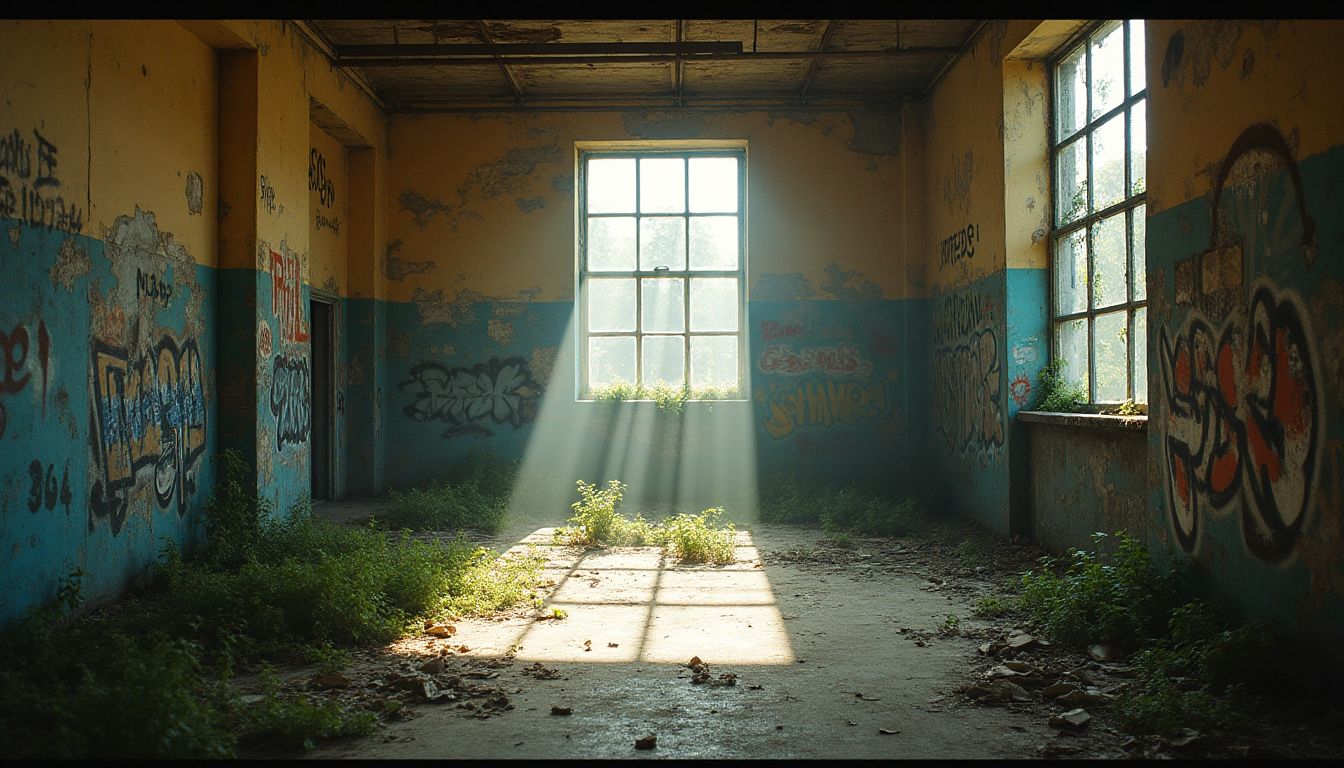Paul O’Malley burst through the door of the abandoned building, heart racing, the air around him thick with anticipation. The soft glow of his flashlight danced across the peeling walls, casting shadows that seemed to flicker with restless memories. He had heard whispers of a hidden secret in this forgotten part of town, a place replete with echoes of its storied past. Today, he would uncover it—or die trying.
Paul wasn’t always a thrill-seeker wandering through derelict structures; once, he was just an unassuming urban planner with a penchant for coffee and city maps. But as the sun began to set behind Toronto’s towering skyline, he welcomed the adventure that awaited him. Guided by an old, creased map he’d stumbled across while researching the city’s history, Paul was convinced that it led to something extraordinary: the remnants of a long-lost Indigenous fishing weir that had inspired the very name of Toronto, Tkaronto—"where there are trees standing in the water."
In moments of quiet, Paul recalled the way his grandfather had spun tales of glory and resilience anchored in the land long before Toronto transformed into a bustling metropolis. Those stories spoke of the Wendat people, of the Mississaugas, of a rich cultural tapestry woven into the very fabric of the city. His grandfather’s voice echoed in his ears, reminding him that understanding a city’s history is as vital as its skyline. With each pulse of excitement, Paul felt the weight of that heritage urging him onward.
As he made his way deeper into the building, his surroundings morphed into a surreal juxtaposition of past and present. Here, within crumbling walls adorned with faded graffiti, was a tapestry of dreams intermingled with the struggles of yesterday’s inhabitants. From the shattered remnants of old storefronts to rusting signs proclaiming businesses that once thrived, the space told a story rife with hope, suffering, and tenacity. Paul felt it beckoning him, urging him to meditate on its truths.
Suddenly, a low rumble disturbed the eerie silence, resonating through the cracked concrete. Paul froze, every instinct screaming at him to flee. Then, from the shadows emerged a figure—Eli, his best friend and unintended partner in adventure, who had long before given up his own city-slicker role for a life more attuned to the heartbeat of nature. Dressed in a rugged leather jacket and boots that seemed to whisper of wild escapades, Eli offered a lopsided grin as he crouched down to pick up a tattered piece of paper.
“Look at this, Paul!” Eli exclaimed, excitement sparking in his eyes. “It’s a long-lost journal.”
Paul joined him, squinting at the fragile pages that detailed the life of a Wendat fisherman, his struggles and triumphs eked out under the canopy of trees that once surrounded Lake Simcoe. The words spoke of communal bonds and respect for nature, a lifestyle that revolved around the societal tenets of connectivity and sustainability, a truth often overshadowed in the rush of modernity.
“These stories, they’re a roadmap,” Paul whispered, awash in a blend of excitement and reflection. “They remind us that names are not arbitrary; they are living legacies.”
As evening descended upon Toronto and the city lights began to twinkle like stars, Paul and Eli shared a moment—a connection not just to each other but to the rich multiplicity of lives lived before them. Together, they agreed to spend weekends traversing the traces of their city’s roots, piecing together a history often overlooked. What began as a reckless adventure shifted toward the critical quest of preserving the legacy encapsulated in the land—and in their spirits.
Days turned into weeks as their commitment to understanding Toronto intensified. Guided by the journal’s wisdom, they embarked on a journey through the layers of urban life, uncovering historical gems, meeting with Indigenous scholars and local activists dedicated to reclaiming and celebrating the city’s multifaceted heritage. Every exploration wove them deeper into a community of passion and purpose.
Through thrilling escapades and enlightening encounters, Paul transformed from a mere explorer into a passionate advocate, a bridge between the city’s storied past and its evolving presence. Each step helped him realize that names carry stories worth preserving, and cities are canvases for cultures yearning to be heard once more.
As the night settled with a serene calm, Paul gazed down from a tall vantage point—a forgotten rooftop overlooking the ever-bustling Toronto. The skyline glimmered vibrantly against the velvet of the night, and with Eli by his side, he whispered vows of remembrance and action. This city’s heart beat not just for its modernity but for every voice that had painted its story—a tale woven through time and stretched across generations. Under the stars, they knew their journey was just beginning.
So, here’s to Tkaronto, where trees stand resolutely in water, where stories bridge divides, and where past and present can converge in brilliance. The future, after all, is written in the whispers of the past; it merely awaits a voice to tell it again.
Genre: Urban Fantasy
The Source...check out the great article that inspired this amazing short story: What was Toronto originally called?
Disclaimer: This article may contain affiliate links. If you click on these links and make a purchase, we may receive a commission at no additional cost to you. Our recommendations and reviews are always independent and objective, aiming to provide you with the best information and resources.
Get Exclusive Stories, Photos, Art & Offers - Subscribe Today!

























Post Comment
You must be logged in to post a comment.